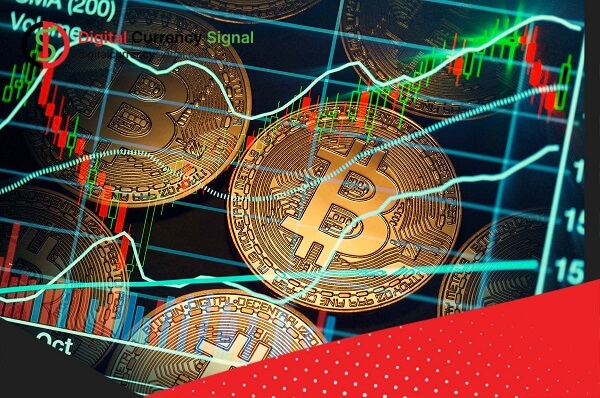Introduction
A token network is a document that includes a collection of criteria that all of the tokens that adhere to that specific standard must follow. To put it another way, a token network is the system that governs how new tokens may be created, issued, and deployed on a particular blockchain.
For instance, Ethereum’s ERC-20 token development network is an instance of a standard for Ethereum token creation. This network makes it simple for programmers to create new tokens that are built on Ethereum’s blockchain. Tokens based on the ERC20 network will all share certain characteristics and be subject to the same set of regulations.
How many types of networks are there?
There is room for a unique token standard on each blockchain, and there may even be enough for more than one. For instance, Ethereum supports a number of different token standards, some of which are ERC-10, ERC-20, and ERC-721.
There is a great deal of variety in the kinds of networks that are being used at the moment; in essence, everyone has their own rulebook. There are a number of other blockchain initiatives in addition to Ethereum that are primarily concerned with the development of smart contracts.
ERC-20 network
ERC-20 is by far the most widely adopted and utilized token standard in the history of tokens. The majority of the tokens that are listed on CoinMarketcap are ERC20 tokens, which were developed on the Ethereum platform. In addition, ERC-20 is one of the earliest and most reliable standards that may be used for developing tokens.
The ERC-20 token standard stipulates that any and all tokens that are developed for use on the Ethereum network must operate in accordance with its stipulations. Tokens based on the ERC-20 standard may be created through Ethereum smart contracts, after which they can be purchased, sold, and traded on various exchanges. The ERC-20 token standard incorporates several different types of data.
How to make an ERC-20 network
Developing an ERC-20 coin requires very little effort on the part of the programmer. ERC-20 token creation, on the other hand, demands technical competence as well as understanding of programming languages. If you do not have any prior understanding or expertise in blockchain creation, it is strongly advised that you seek the assistance of a specialist.
BEP-20 network
BEP-20 is the crypto token creation network that has gained the second greatest traction in recent years. Binance Smart Chain is being used for the development of a significant number of new tokens, mostly due to the fact that it is quicker, more efficient, and allows cross-chain interoperability.
Because the BEP-20 was developed as an expansion of the ERC-20, it naturally took on all of the characteristics of its predecessor.
All tokens on the Binance Smart Chain are inherently built on the BEP-20 network since this is the principal token standard for the Binance Smart Chain (BSC). The BEP-20 specifies the rules that must be followed in order for a BEP-20 token to be used, transferred, authorized, and maintained properly. It is important to keep in mind that BEP-20 is not to be confused with BEP-2. These two Binance token specifications are completely independent of one another.
BEP2 Vs BEP20
BEP2 is the network of the Binance Chain, whereas BEP20 is a network that is compliant with the ERC20 protocol. Both tokens may be exchanged for one another. Because there are benefits and drawbacks associated with both kinds of tokens, it is essential to choose the type that is most appropriate for your requirements.
BEP2 tokens are more generally accepted and provide more functionality than BEP20 tokens, however some users may find them more difficult to utilize because of their unfamiliarity with the tokens.
BEP-20 network development process
The procedure that must be followed in order to produce a BEP-20 token is noticeably simpler. Even without any prior experience with blockchain technology or specialized technical skills, it is possible to generate a fundamental BEP-20 coin. However, in order to build a fully personalized and feature-rich BEP-20 token from scratch, you will undoubtedly need the assistance of an experienced BEP-20 token developer who has the necessary technical skills.
TRC-20 network
A network known as TRC20 is used for releasing and maintaining tokens that have been generated on the TRON network. Every token on the network is required to abide by these regulations, which are defined by the TRC20 standard. These comprise the regulations for the issue of new tokens, the performance of and approval of a token transfer, the sending and receiving of tokens, and other related activities.
On the TRON blockchain, the TRC-20 network governs the process through which new tokens are issued. Due to the fact that TRON is a public blockchain, it enables anybody to develop and issue their own tokens in accordance with the guidelines outlined in the TRC-20 standard. Any single TRC-20 token has the ability to communicate fluidly with every other token and app that is built on the TRON network.
TRC-20 network development
On the website for the TRON network, it is possible to manufacture and distribute brand new TRC-20 coins. In order to do this, the designer has to create the code for the TRC20 smart contract, which, of course, calls for specialized expertise as well as an awareness of the programming language. After the contract has been constructed, it may be put on the network, and then new tokens can be issued based on the contract itself.
Differences and similarities between popular networks
BEP20 tokens are constructed on BSC, which is different from ERC20 tokens, which are established on the Ethereum blockchain. TRC20 tokens are founded on the TRON blockchain. Because all three networks employ the same integrity protocol, this indicates that they are essentially cross-compatible with one another and can be utilized alternately.
Tokens that were produced on one platform may be accessed on the other two networks. Aside from the differences in costs and usability, the process of producing and distributing tokens is almost same across all three networks. The BSC network is the most effective one for the production of tokens, and it also has the lowest transaction costs.
We hope that this digital currency signal post has helped you realize what types of networks are in there and which ones are the most important ones.





